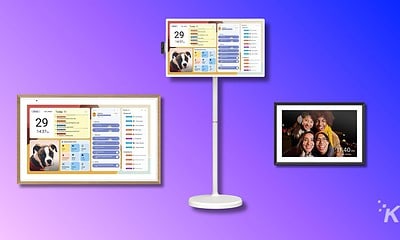Sponsored
Is the return to the office truly inevitable in 2023? This company proves otherwise
Wartoft and Tigerhall are proof that committing to a remote work setting can be a win-win.

Just a heads up, if you buy something through our links, we may get a small share of the sale. It’s one of the ways we keep the lights on here. Click here for more.
Empowering employees to work remotely solved more than a handful of problems for businesses during the COVID-19 pandemic. On the other side of the pandemic, however, remote work is causing big problems.
Many employees have decided that they really like remote work. In fact, many say they are willing to take a pay cut in order to keep working from home.
Yet, in many organizations, management still wants their employees back in the office due to concerns about flagging productivity and eroding culture.
As this tension plays out, some innovative organizations are proving that, with the right retooling, remote work can become the new normal. Tigerhall is one of those organizations.
Founded in 2019 by Swedish entrepreneur Nellie Wartoft, Tigerhall is a social learning platform that is revolutionizing the way professionals learn from one another in the real world.
It gives individuals and organizations the ability to reimagine talent development with micro-learning opportunities and in-the-moment insights provided by subject matter experts and Fortune 500 leaders.
The following tips from Wartoft can be leveraged by organizations looking to build culture and drive productivity while still giving employees the flexibility they want.
Retool onboarding to meet remote challenges

Getting onboarding right is critical for any organization. An effective onboarding process clarifies roles and expectations, accelerates new hire proficiency, and helps with cultural assimilation.
When onboarding makes new hires feel welcome and valued, it also builds loyalty and improves retention. The biggest challenge for onboarding remote workers is incorporating ways for them to make connections with their colleagues.
“Remote onboarding requires more structure than traditional onboarding,” Wartoft explains.
“This includes being very direct about who new hires should be meeting. Tell them who they should reach out to and who they should schedule one-on-ones with. Encourage them to be proactive about this from day one, and make sure they can access their colleagues’ calendars to book meetings.”
Fostering social connections is another important part of remote worker onboarding. Wartoft recommends new hires have some social interaction with their new colleagues every day.
“Make sure they schedule time with people for the sole purpose of getting to know them,” she encourages. “You can even consider, as we have done at Tigerhall, having all employees record a short
Be intentional about building relationships

Another factor organizations must consider when going remote is how to maintain communications and relationship-building without overwhelming people with Zoom meetings.
Wartoft says, to some degree, employees must accept that more screen time comes with the territory.
“Most employees want more social interaction and more relationship building, while simultaneously wanting less screen time and Zoom calls. This is a tradeoff one has to accept if working in a fully remote setup — one doesn’t come without the other.”
Leveraging community communications platforms like Slack is one way to intentionally inspire healthy and inclusive communications that keep remote workers in the loop and give them opportunities to contribute.
Public Slack channels are a critical tool for keeping remote work environments connected,” Wartoft says. “Do not rely on direct messaging and private communication. Put everything in public channels so everyone has a chance to learn and jump in and contribute. This accelerates the speed of the whole company, allowing them to respond faster and get things done faster. A DM culture slows down an organization by adding the time it takes for individuals to reply to private messages into the total time it takes to get things done.”
Be aware of leadership challenges

The shift to remote work has also required a shift in corporate leadership. To manage remote teams, executives and managers must become remote leaders, which can involve developing both a new mindset and a new skill set.
I think great leadership is always great leadership, but there are certain traits and types of leaders I believe work better in a remote setting vs in-person setting,” Wartoft says. “For example, if you’re a leader who is focused on hiring high quality, independent, and ambitious people who you can delegate to, then I think remote management will go well. A great remote leader will be someone who is transparent, empowering, and trusting.”
Alternatively, Wartoft says leaders who prefer to hire more junior people and train them could struggle with remote work settings.
If their style is more energetic, driving, brainstorming, and creative, they’ll have a better chance of thriving in an in-person environment.
“With remote leadership, your written communication skills need to be stronger, as does your executive communication, transparency, and culture-building efforts,” Wartoft explains. “With in-person leadership, your energy and the way in which you bring people together and create a sense of belonging in the office plays a bigger role.”
Wartoft and Tigerhall are proof that committing to a remote work setting can be a win-win. Employees get the flexibility they seek while organizations can continue to have the levels of productivity and engagement they need to succeed.
The key is acknowledging and addressing the challenges that are unique to a remote office setting.
Have any thoughts on this? Drop us a line below in the comments, or carry the discussion to our Twitter or Facebook.
Editors’ Recommendations:
- Sightful’s new AR laptop aims to change remote work forever
- Here are the top remote work trends for 2023
- Will hybrid work stay in 2023 and beyond?
- xTiles: The all-in-one workspace that makes your life easier
Disclosure: This is a sponsored post. However, our opinions, reviews, and other editorial content are not influenced by the sponsorship and remain objective.

































